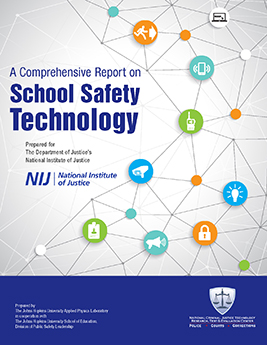Press Release
Johns Hopkins Applied Physics Laboratory Report Advises on Planning for School Safety and Security Technologies
Fri, 04/06/2018 - 16:17

Credit: APL
No matter where you land in the debate over school safety, many experts agree that no single solution is best for all schools. But according to researchers from Johns Hopkins University, schools and systems can take a similarly sound approach to deciding what safety improvements to make and how to make them.
Funded by the National Institute of Justice (NIJ), experts from the Johns Hopkins University Applied Physics Laboratory (APL) in Laurel, Maryland, teamed up with colleagues from the Johns Hopkins University School of Education and the Bloomberg School of Public Health to create A Comprehensive Report on School Safety Technology. Designed to help those working through the complex decisions related to school safety and security, the report — released in fall 2016 — includes significant assessments of current technologies as well as potential technology needs.
“While certain technologies have advanced since we issued the report, the technology categories and underlying guidance for planning and selecting a security infrastructure are still valid,” said APL’s Richard Waddell, who managed the NIJ-funded effort.
The report covers technologies used in K–12 schools to prevent, respond to and mitigate criminal acts of violence. It also identifies factors — such as laws, policies, regulations and costs — that have affected the deployment and use of these technologies. The report sorts the technologies by type, such as access control, alarms and sensors, communications, lighting, software applications, surveillance, weapons detection and other technology systems.
Waddell says the chapter on technology implementation planning should be especially valuable to school administrators, security directors, principals and other decision-makers. “The chapter’s perspective on risk management is foundational to school safety technology planning, integration and implementation,” he said. “It focuses on how to assess the need for technologies and to develop a justification for their implementation. From that, a reader can use information on the different technologies to determine what works best for them.”
Decisions about whether to invest in security technology for a school or school district must take into account a variety of logistical, economic and political factors. “We assembled this report as a tool for those working through those complex decisions, and to ultimately help achieve better safety and security in our schools,” Waddell said.
Download the report at https://www.ncjrs.gov/pdffiles1/nij/grants/250274.pdf.